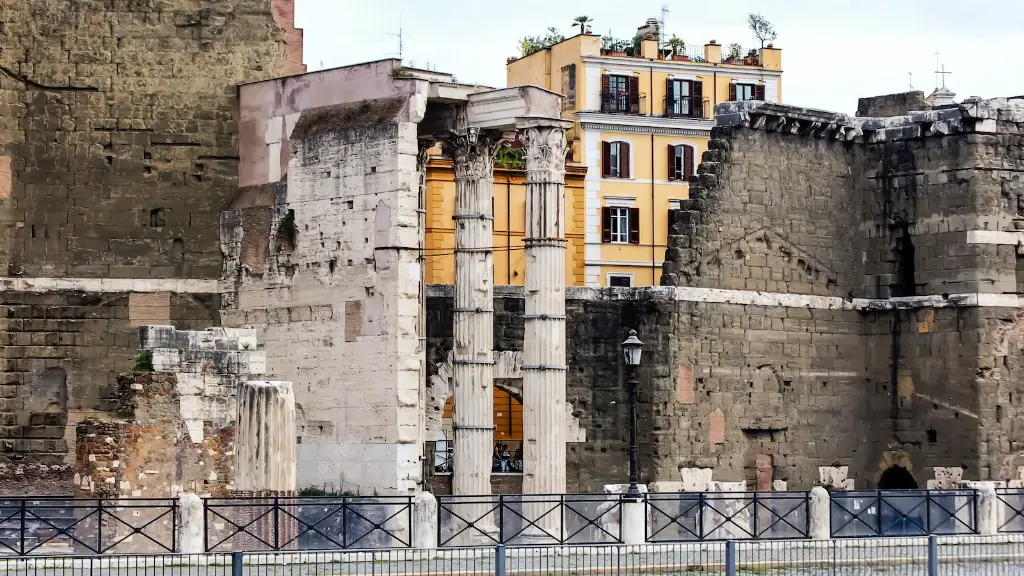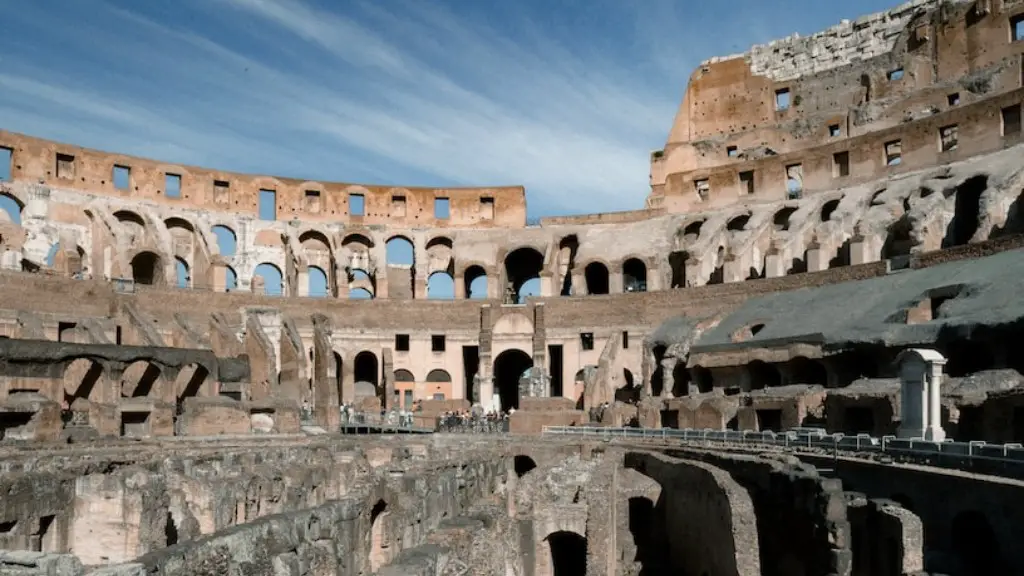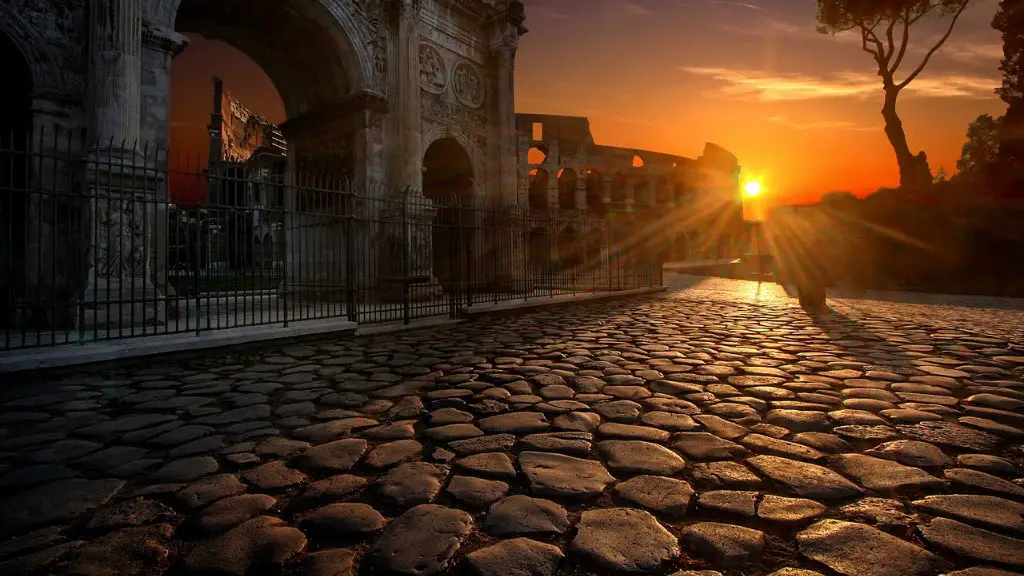The concept of slavery has existed for centuries, with slaves performing all kinds of tasks for their owners. In Ancient Rome, slaves were no exception, working in the fields, providing labor, and doing all sorts of other tasks. But there were several things that slaves were not allowed to do in Ancient Rome.
Roman citizens were not allowed to own other Roman citizens, so the vast majority of slaves were acquired by capture in wars, raids, and other military activities. Those slaves were typically subject to certain restrictions, including not being able to bear arms and not being able to be part of the government or military. This ensured that the Roman citizens would maintain their power and privileges over the slaves.
Slaves were also not allowed to own property or to marry anyone outside their master’s family. This meant that the slaves were wholly dependent on the goodwill of their masters and were not able to build up their own wealth or status. This gave their masters an immense advantage and kept the slaves completely under the control of their masters.
Slaves also did not have any religious or legal rights. They could not worship their own gods or participate in court proceedings. This was in stark contrast to the citizens of Rome, who had full religious and legal rights and were even able to vote in the Senate or become part of the military. In other words, slaves were completely deprived of the ability to make their own decisions.
Moreover, slaves were not allowed to bear any weapons or carry any military rank, as it could potentially threaten the rights and privileges of Roman citizens. This also meant that slaves were unable to protect themselves, as they were unable to own or carry any weapon of self-defense.
Slaves were also not allowed to be involved in any public activity, such as attending the theatre or going to the public baths. Slaves were not allowed to even walk in public, except to perform duties related to their master. They were regarded as second-class citizens and due to their lower social status, Rome did not feel the need to provide any safety or security for them.
Physical punishment for slaves
In Ancient Rome, slaves were subjected to all kinds of punishments from their masters. Masters had the right to physically discipline their slaves, and the punishments could be brutal and cruel. Masters were even allowed to kill their slaves if they felt the need to do so.
Slaves could be beaten, branded, tortured, and maimed, and it was completely legal for a master to do so. This was especially true if the slave had committed a serious offence or had attempted to flee. Many slaves were killed by their masters for committing even minor offences and this was accepted as normal practice.
Although there were laws which provided some protection and rights to slaves, they were often ignored or overridden by the masters. This made the life of slaves incredibly difficult, as they were unable to develop any sense of security or safety, as their lives were constantly in danger.
The life of slaves in Ancient Rome
In Ancient Rome, the life of a slave was incredibly difficult and bleak. Slaves were treated as less than human and were often used as a source of labour or entertainment. They were forced to live in harsh conditions and were not provided with any basic human rights or freedoms.
Slaves were unable to work for themselves or for anyone other than their master, as it was illegal for them to do so. This limited the earnings of slaves and meant that their poverty was even worse than for the citizens of Rome. They were also subject to constant humiliation and abuse from their masters, making their daily lives even more miserable.
In addition, slaves were not allowed to take part in any form of art, literature, music, or philosophy, as these things were deemed to be reserved only for Roman citizens. This meant that slaves were unable to express themselves or develop any sense of identity.
The life of a slave in Ancient Rome was incredibly difficult and make no mistake; slaves were not allowed to do much at all. Life for slaves was one of almost complete servitude and subservience to their masters.
The impact of slavery on Ancient Rome
The use of slaves in Ancient Rome had a significant impact on the society at the time. Slavery allowed the wealthy to maintain their wealth, as slaves were a cheap source of labour. It also ensured that the rights and privileges of Roman citizens were upheld, as the slaves were prevented from obtaining those rights.
However, the use of slaves had certain drawbacks as well. Slaves were sometimes difficult to control, and could be rebellious or uncooperative. This could lead to problems for the masters if the slaves were to revolt or cause trouble.
Slaves were also often mistreated and abused by their masters, as there was no law to protect them from such treatment. This led to resentment and dissatisfaction amongst slaves and could potentially lead to unrest or uprisings.
The use of slaves in Ancient Rome was a double-edged sword. It had the potential to bring great wealth and power to the Roman citizens, but it had some negative consequences as well.
Roman views on slavery
In general, the Romans held a mixed attitude towards slavery. In some respects, slavery was seen as a fundamental part of the Roman society, as slaves were a cheap source of labour and allowed for the Romans to maintain their wealth and power.
On the other hand, the Romans were aware of the potential problems that the use of slaves could bring. In some cases, they attempted to bring in reforms to protect and improve the lives of their slaves, although these were often ineffective.
Overall, the Roman attitude towards slavery was pragmatic. They were aware of the potential drawbacks but also saw the practical benefits of having a large number of slaves at their disposal. Slavery was an inherent part of Ancient Roman society and it had an influence on almost every aspect of life in Rome.
Slavery in other ancient societies
Slavery was commonplace in other ancient societies as well. In ancient Egypt, for example, slaves were used as labourers in the fields, as well as in the building of monuments and other structures.
In ancient China, slaves were used as miners and farmers and were also used to build the Great Wall of China. In ancient Greece, slaves were used largely in the production of goods, such as textiles and pottery, and were a vital part of the economy.
Slavery was a common feature of many ancient societies and had a significant influence on those societies. Slavery allowed the wealthy to maintain their wealth and power, while keeping the poorer classes in a state of servitude and subservience.
Abolition of slavery
In the 19th century, many countries began to take steps towards the abolition of slavery. In the United States, the 13th Amendment passed in 1865, finally bringing an end to slavery. Other countries soon followed suit, with many abolishing the practice by the end of the century.
Today, slavery is still prevalent in many parts of the world, and it continues to be a major issue. Organizations such as the International Labour Organization (ILO) are working hard to combat modern slavery and human trafficking, and to ensure that the rights of individuals are protected.
The practice of slavery has been a tragedy throughout human history, and it has had a significant impact on society. It is heartening to see that there is now a greater emphasis on fighting against slavery, and that people are becoming increasingly aware of the need to protect the rights of all individuals, regardless of their status.





